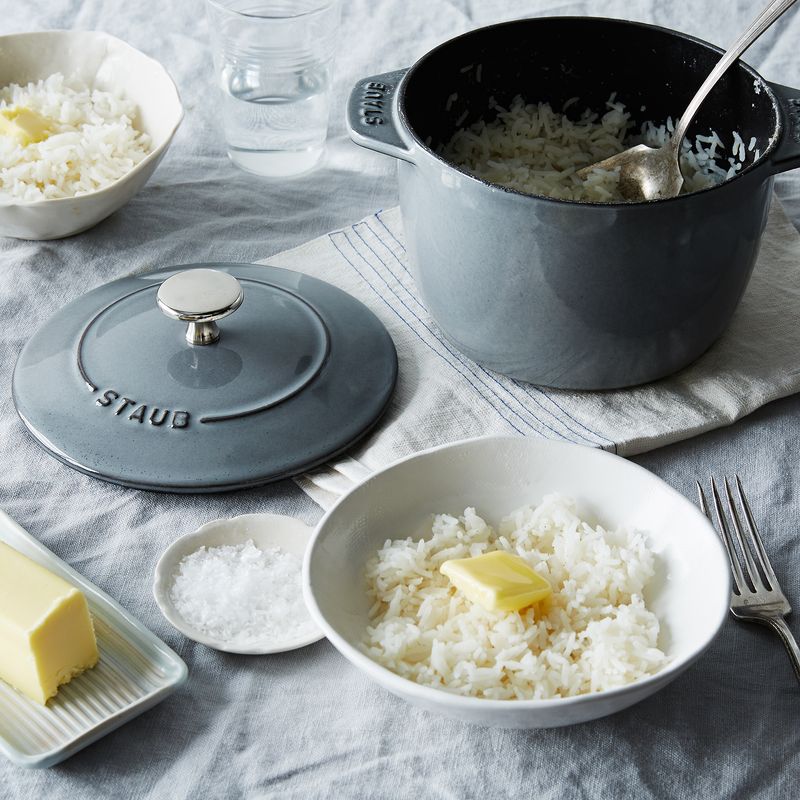“It’s the ultimate flip-flop,” writes Rachel Yang in her new cookbook, My Rice Bowl. “Which is often how we roll.” She’s referring to the four mother sauces she serves at her street food–inspired Seattle restaurant, Revel. The “flip-flop” refers to the fact that, unlike the classic French mother sauces that are the foundation of each dish, Yang’s sauces are added to a dish by diners right before eating.
And add them they do, in great quantities. The four sauces each bring something different to the rice bowl (or noodle, or pancake, or dumpling) party, and you can learn a lot about balancing flavors by combining them. Below, a run-down of Yang’s four sauces—experiment at will!

by Amanda Sims
Spicy Dumpling Sauce
A mix of aromatics, rice vinegar, and chile, this is a tangy/spicy number that will brighten up any dish. Yang blends ginger and garlic with rice vinegar and sugar until smooth before adding a Korean chili paste.
Nam Prik Sauce
While much of Yang’s food plays with Korean flavors and ingredients, this sauce takes its inspiration from Thailand. A combination of fish sauce and lime juice, Yang’s Nam Prik brings the salt, funk, and acid to your bowl. (It’s similar to the flavors in this Nam Prik jam.) Yang says slicing the super-spicy Thai chiles for this dish is “about as close to hazing as our kitchens get.”
Savory Chili Sauce
Perhaps the simplest of the four sauces, the savory chili sauce is a combination of Korean bean paste, Korean chili paste, water, and a touch of sesame oil. Unsurprisingly, it brings spice and savory flavors to the table. Yang says to play with the balance of bean paste and chili paste until you get what you like: “It should have a good balance of spice and funk.”
Seasoned Soy Sauce
This sauce, writes Yang, “has a bit of heat, a bit of citrus, a bit of floral flavor, and—because it’s cut with mirin and sake—a bit less saltiness than straight soy.” She not only sets this on the table for customers to use, but also uses it in lieu of straight soy sauce in recipes. Try the dipping sauce for these wings for a similar seasoned soy sauce effect.
In combination, these four sauces help balance the flavors in a bowl of food: they bring spice, tang, funk, and salt to the equation. How you deploy them is a matter of taste, but that’s half the fun, right?
(via Food52)






